A Newsletter from the Minnesota Department of Agriculture
|
|
|
December 9, 2019
Holiday Greenery Precautions
Insects and diseases can hitchhike on trees and holiday greenery brought into Minnesota from other states. The Minnesota Department of Agriculture (MDA) inspects holiday products for elongate hemlock scale, boxwood blight, oriental bittersweet, gypsy moth, and many more. Do your part to protect our environment when the holiday season is over. Our forests, city trees, and yards depend on us to stop new invaders.
Follow this advice:
- Do not toss trees and greenery into backyard woods or your compost pile.
- Use a city/county organized tree and greenery pick-up.
- Burn the greens. Always check with local ordinances first and follow them.
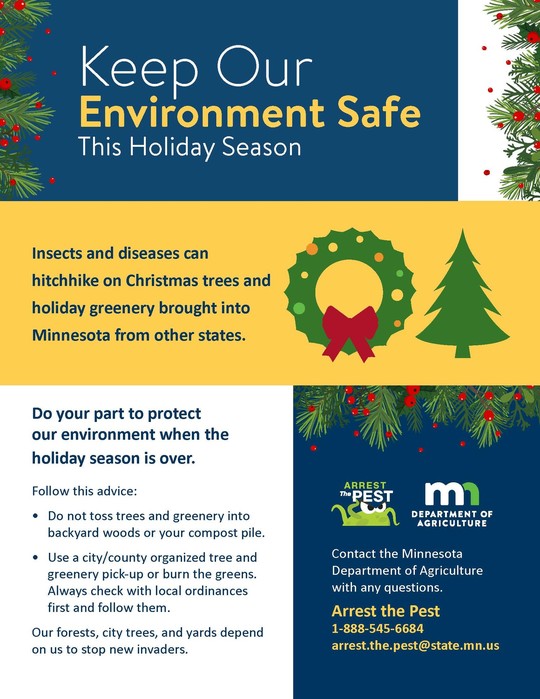 Printable pdfs of the poster above are available online in a variety of sizes.
|
|
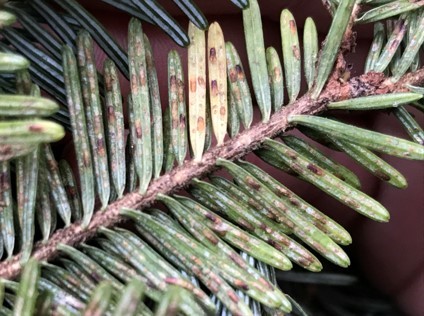
Elongate Hemlock Scale
Elongate hemlock scale is found almost exclusively on the underside of conifer needles. Given their small size and inconspicuous appearance, the elongate hemlock scale may appear to be dirt or debris to the untrained eye.
Read More
|

Oriental Bittersweet
Oriental bittersweet vines have been used in holiday decorations and other crafting items for many years. Fruiting branches, which have red berries and yellow fruit capsules, make wreaths charming but easily spread seed. Oriental bittersweet is designated as a noxious weed on Minnesota's Eradicate List. If craft arrangements, such as wreaths, are placed outside, birds can eat the fruit and move the seed to new locations.
Read More
|
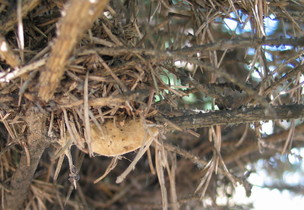
Gypsy Moth
Gypsy moths lay their eggs in protected areas on both natural and artificial surfaces. Christmas trees can have egg masses on trunks and branches. Egg masses are quarter-sized fuzzy, tan colored and contain 500 - 1,000 eggs.
Read More
|
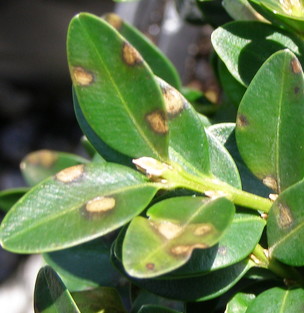
Boxwood Blight
Holiday wreaths, garlands, and planters often contain shoots from boxwood plants. Boxwood is an evergreen shrub with dark green, rounded leaves. In 2018, many states received shipments of holiday wreaths and other festive greenery infected with boxwood blight. Boxwood blight is caused by the invasive fungus Calonectria pseudonaviculata. This disease causes leaf spots, stem lesions, and leaf drop in boxwoods. The pathogen can kill young boxwood plants and turns established shrubs into leafless skeletons. Landscape boxwood shrubs, sweet box (Sarcococca spp.), and the ground cover Pachysandra can be infected by the fungus. Boxwood blight has been found in 28 states but has not yet been identified in Minnesota.
This holiday season, the MDA is asking anyone with boxwood shoots in a holiday decoration to carefully examine the shoots for leaf spots and stem lesions. Leaf spots are tan in the center and have a dark purplish black margin. Infected stems have long thin black streaks.
Read More
|

Weeds that Impact Hunters
When hunting, weeds are often an afterthought or not thought of at all. Unfortunately, weeds can have a negative impact on wild game if ignored and not managed in a timely manner. Weedy species can also be burdensome to hunters.
Some noxious weeds that pose problems for hunters and wild game are Japanese barberry, Oriental bittersweet, buckthorn, and multiflora rose. These four noxious weeds pose different threats but have some similar characteristics:
- They take over the understory of wooded areas halting native regeneration.
- The weeds can affect wetlands or riparian areas.
- They harbor pests that can be harmful to humans and wild game.
- These weeds outcompete our native plants which wild game may seek out.
Read More
|
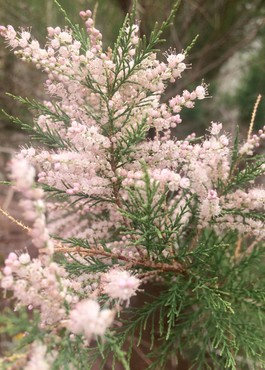
Saltcedar
Saltcedar (Tamarix ssp.) or tamarisk was introduced to the United States in 1823 on the East Coast. They were originally planted as ornamentals, to create wind breaks and to provide shade and stabilize streambanks, but their negative impacts have surfaced within the last few decades.
Saltcedar was first reported escaping cultivation in the 1870s. In the southwestern United States, they quickly outcompeted native willows and other riparian shrubs and reduced water levels. Although arid regions of the Southwest have been hardest hit by tamarisk species, there are increasing reports of saltcedar invading grasslands in the Dakotas and western Minnesota. To better understand the threat that saltcedar poses to Minnesota, it was selected for evaluation by the MDA's Noxious Weed Advisory Committee.
Read More
|
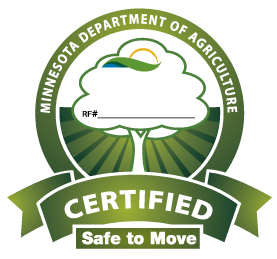
The Minnesota Department of Agriculture has certified nine firewood producers in the state of Minnesota for heat treatment of firewood. Look for the logo when purchasing firewood. It means the firewood is safe to move and is free of emerald ash borer.
Certified firewood producers:
- Emily Forest Products
- JN Firewood
- Minnesota Firewood LLC
- Paul's Fireplace Wood Inc.
- Price Firewood
- Sunset Firewood Company
- TSL Firewood
- Wood Chuckers Firewood LLC
- Leroy Habiger "The Firewood Man"
|
|
|
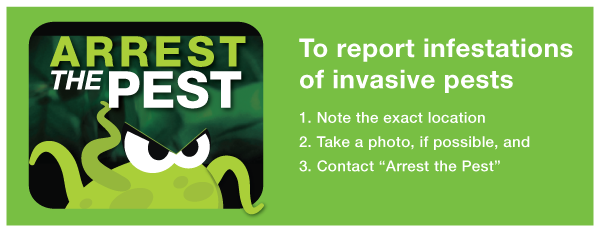 Call us at 888-545-6684
Email us at arrest.the.pest@state.mn.us
|
|